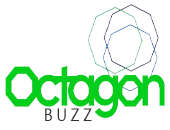WAAA-117, also known as Water and Agriculture Assessment Allocation 117, is a regulatory framework designed to optimize water resource management in agricultural practices. This initiative aims to address the growing concerns surrounding water scarcity, sustainable farming, and environmental preservation. In this article, we’ll explore the key components of WAAA-117, its objectives, and its implications for farmers and the environment.
Key Components of WAAA-117
- Water Allocation Management: WAAA-117 establishes guidelines for equitable water distribution among agricultural users. It prioritizes efficient water use, ensuring that farmers have access to the necessary resources without over-extraction.
- Sustainability Practices: The framework encourages the adoption of sustainable agricultural practices, such as crop rotation, organic farming, and precision irrigation techniques, to minimize water waste and enhance soil health.
- Monitoring and Reporting: WAAA-117 requires regular monitoring of water usage and agricultural outputs. Farmers must report their water consumption and adhere to set limits, promoting accountability and transparency.
- Community Engagement: Stakeholder involvement is crucial. WAAA-117 emphasizes collaboration between farmers, local governments, and environmental organizations to develop strategies that meet both agricultural needs and conservation goals.
- Funding and Resources: The initiative provides access to funding for farmers who implement sustainable practices and technologies. Grants and subsidies are available to support innovation in water-efficient farming.
Objectives of WAAA-117
- Conserve Water Resources: The primary goal is to reduce water consumption in agriculture and protect freshwater resources from depletion.
- Enhance Crop Productivity: By promoting efficient water use, farmers can improve crop yields and overall productivity.
- Promote Environmental Health: WAAA-117 aims to reduce agricultural runoff and pollution, ensuring healthier ecosystems.
- Support Economic Viability: The initiative seeks to sustain the agricultural economy by making farming more resilient to climate change and water shortages.
Implications for Farmers
- Compliance Requirements: Farmers must familiarize themselves with WAAA-117 regulations to ensure compliance. This may involve adjusting irrigation practices and submitting regular reports.
- Investment in Technology: To meet the guidelines, farmers might need to invest in new technologies, such as drip irrigation systems or soil moisture sensors, which can improve water efficiency.
- Training and Education: Ongoing education on sustainable practices will be necessary for farmers to adapt effectively to the new regulations.
- Potential for Funding: Farmers who implement recommended practices may benefit from financial assistance, which can offset the costs of compliance.
FAQs about WAAA-117
Q1: What is WAAA-117? A1: WAAA-117 is a regulatory framework aimed at optimizing water resource management in agriculture, focusing on sustainable practices and equitable water allocation.
Q2: Why was WAAA-117 introduced? A2: It was introduced to address water scarcity, promote sustainable farming practices, and protect environmental health in the face of increasing agricultural demands.
Q3: How does WAAA-117 affect farmers? A3: Farmers must comply with new regulations on water usage, invest in efficient technologies, and participate in monitoring and reporting their water consumption.
Q4: Are there any financial benefits for farmers under WAAA-117? A4: Yes, farmers implementing sustainable practices may qualify for grants and subsidies to help offset compliance costs.
Q5: What are some sustainable practices encouraged by WAAA-117? A5: Sustainable practices include crop rotation, organic farming, and precision irrigation techniques designed to reduce water waste.
Q6: How can farmers stay informed about WAAA-117? A6: Farmers can stay informed through local agricultural extension services, workshops, and community meetings focused on WAAA-117 initiatives.
Conclusion
WAAA-117 represents a significant step toward sustainable water management in agriculture. By promoting responsible water use and encouraging environmentally friendly practices, it aims to ensure that agricultural productivity can coexist with conservation efforts. Farmers who embrace these changes not only contribute to environmental sustainability but also position themselves for long-term success in an increasingly resource-constrained world.











